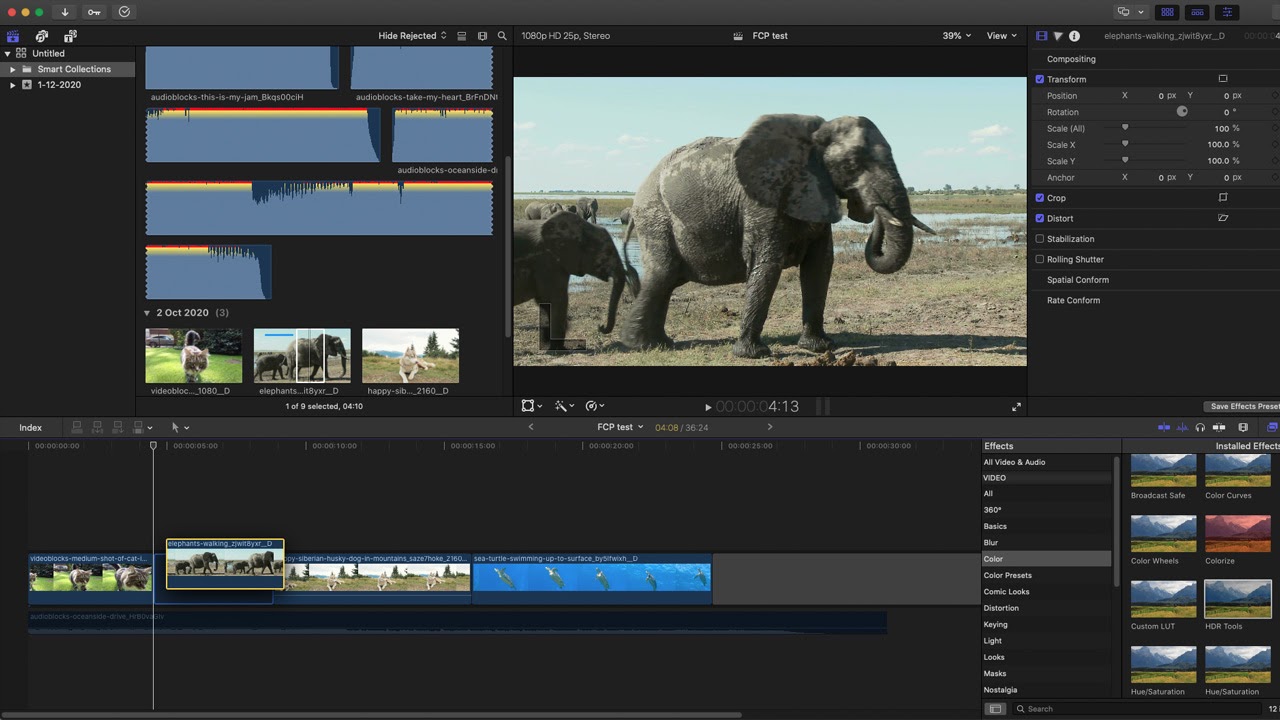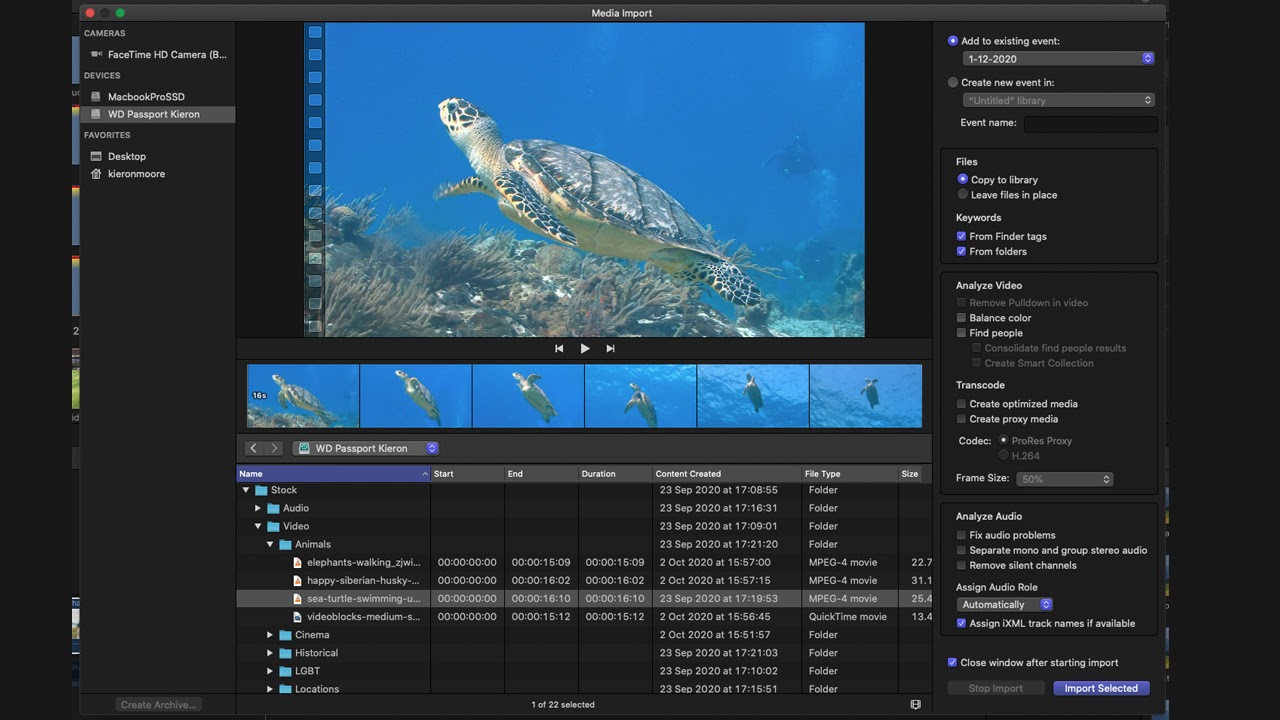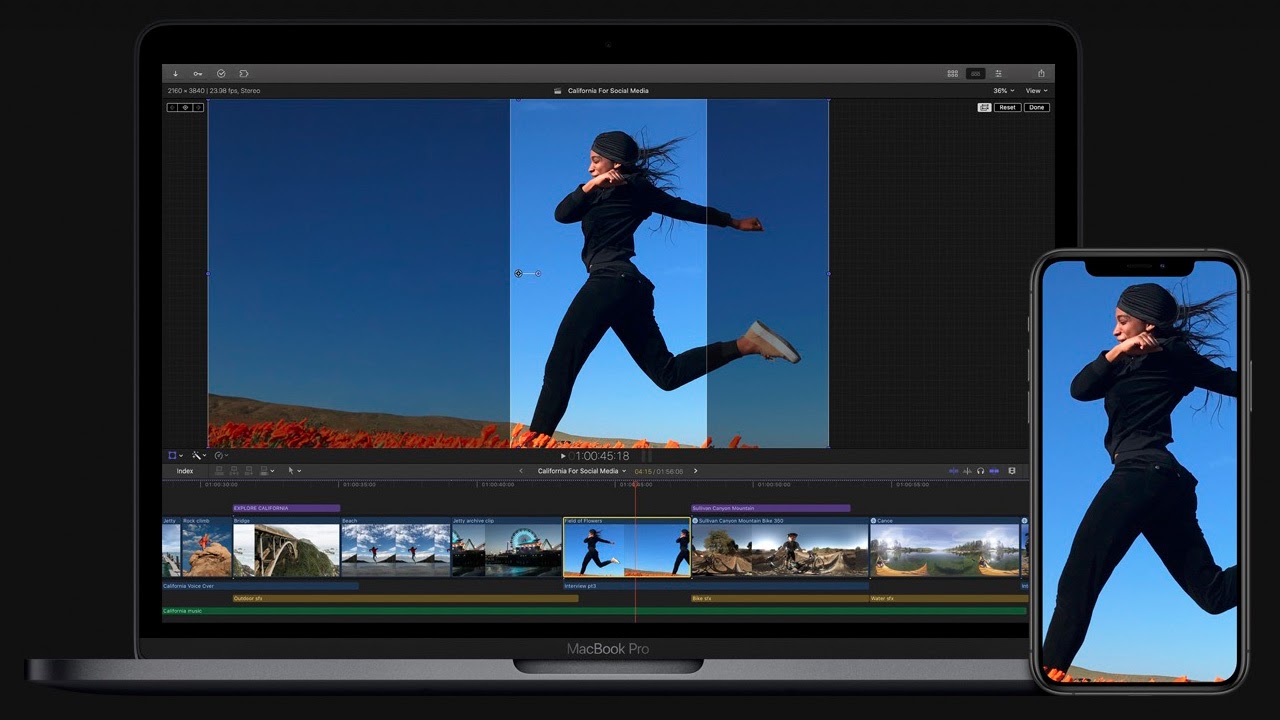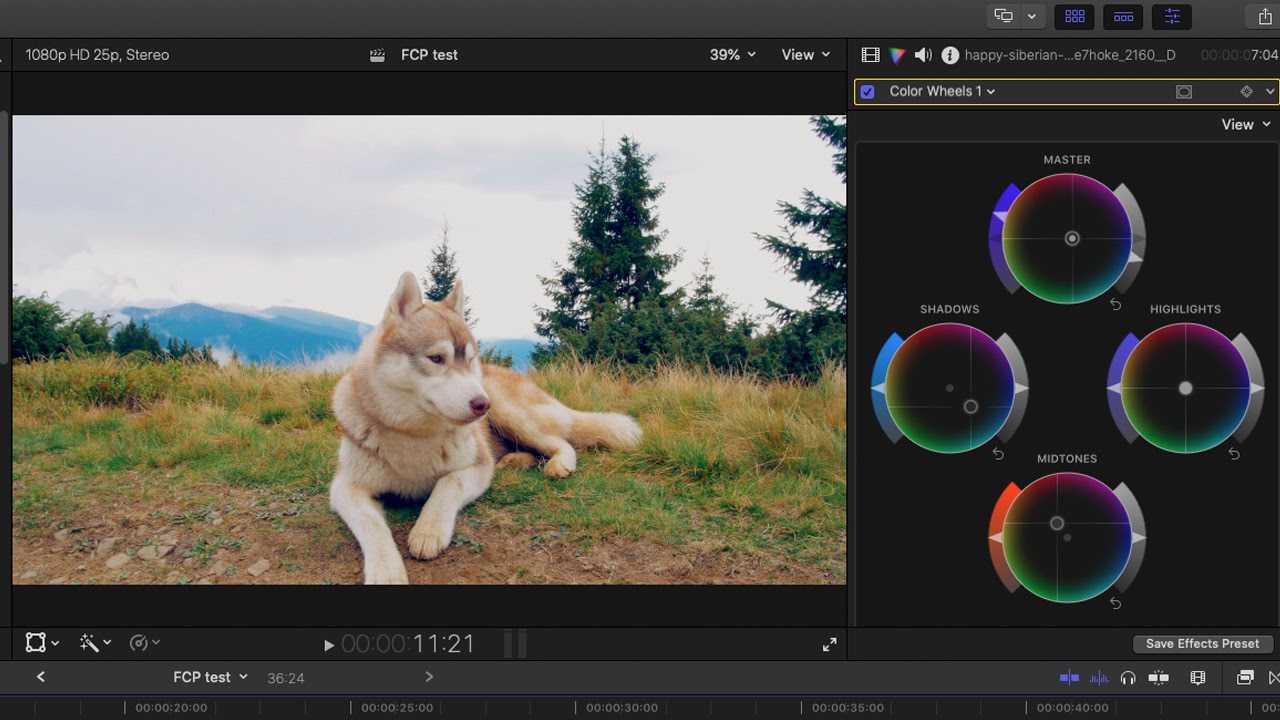Final Cut Pro Vs Imovie
Our Verdict
Though it's fallen behind its competitors, Final Cut Pro isn't worth discounting yet. It's a powerful, pro-level editing app, and its clip organisation tools are unmatched elsewhere.
For
- Excellent organisation tools
- Efficient timeline
Against
- A while since last big update
- Inferior social media features
- Expensive
Creative Bloq Verdict
Though it's fallen behind its competitors, Final Cut Pro isn't worth discounting yet. It's a powerful, pro-level editing app, and its clip organisation tools are unmatched elsewhere.
Pros
- + Excellent organisation tools
- + Efficient timeline
Cons
- - A while since last big update
- - Inferior social media features
- - Expensive
Apple's Final Cut Pro was once undoubtedly among the top players in the video editing sphere, and was used by high-end cinema and TV productions. But its popularity has been overtaken by Adobe Premiere Pro and DaVinci Resolve, which have grown significantly while Final Cut has fallen behind. Nevertheless, it's still a powerful editing application, suitable for experienced editors to create professional-standard content, and it still makes our best video editing software roundup.
The latest edition, Final Cut Pro 10.5, was released in November 2020. The latest release includes optimisation for fast performance on Macs with Apple silicon, enhanced proxy workflows, and new social media tools. In our Final Cut Pro 10.5 review, we'll assess how this latest version of Apple's editing software fares in today's marketplace.
Final Cut Pro 10.5: Magnetic timeline

While Final Cut's main interface is very typical – timeline on the bottom, clip library top left, and preview window top right, with effects windows on the right when you need them – the functionality of the timeline, described by Apple as magnetic, distinguishes it from its competitors.
At first glance, it's quite simple, without clear lines marking the divisions between tracks, so more like the iMovie timeline than other high-end editing suites. But it's actually a powerful feature, and its freeform, no-fuss nature can be an advantage.
When you insert a clip between existing clips, the ones to the right scoot out of the way, with all clips afterward staying in the same relative position. And if you drag clips out of place, the surrounding clips close to fill up the space left behind. It may be a shock to editors used to the stricter control of Premiere Pro, but this can speed up editing significantly once you've got the hang of how it works.
Final Cut Pro 10.5: Organisation

Rather than importing media to a project, as you would in Premiere Pro or DaVinci Resolve, you import to a library, which you can access from multiple projects. This is useful if you're likely to make more than one video using the same footage.
There are options to create optimised or proxy versions of your video clips when importing to libraries, and to automatically balance colour or fix audio issues. Final Cut is also able to analyse clips on import and sort them into folders based on type of shot (long, medium, or close-up), whether they contain people, and whether they're stable. This useful feature saves time trawling through your footage.
Plus, you can use keywords to tag not only entire clips but also sections of clips. This makes it really easy to collect shots you may need later, without interfering with the main organisation of your library, and is a step above the tagging options in other editing software.

In the most recent update, Apple has added tools to optimise your video for various social networks, including an option to duplicate a project into a new version with a different aspect ratio.
Smart conform automatically picks the most important area of each clip and crops around it, so that nothing is lost in the ratio change. However, Premiere Pro has had this feature for a while, and Final Cut's version doesn't work as well. In our tests, it wasn't always accurate, and it picks a static area to crop to rather than panning to follow action.
There are options to export and publish directly to YouTube and Vimeo, though this is far from exhaustive, and Premiere does the same with more social networks.
Final Cut Pro 10.5: Colour grading

There's an impressive selection of colour tools. If you're working quickly or aren't confident with advanced tools, you can automatically balance colour, saturation and exposure, or add one of many presets.
But for precise work, the color wheels tool is very useful. You have four wheels—master, shadows, highlights, and midtones—and can drag the centre of each wheel towards the color around the edge, with the resulting color helpfully displayed at the side. There are also sliders for saturation and brightness around each wheel. It's very intuitive, more so than the equivalent in Premiere Pro, and gets good results. However, DaVinci Resolve is still the best choice for in-depth color grading options.
Final Cut Pro 10.5: Should I buy it?
Though it's not been improved upon in recent years as much as Adobe Premiere Pro or DaVinci Resolve, Final Cut Pro still has many advantages. Its interface can be very efficient and it has excellent file organisation.
However, the social media functionality, though improved in the recent update, is poor compared to Premiere Pro's. And the colour grading, though more intuitive than Adobe's, doesn't match up to Resolve's.
Final Cut Pro costs $299.99, a hefty price tag. In comparison, Premiere Pro is $20.99 a month, and the standard version of Resolve is free. That said, Premiere's subscription fee builds up over time, so Final Cut may work out cheaper if you edit often, and the full version of Resolve costs a very similar $295.
In the final estimation, Final Cut Pro certainly shouldn't be discounted. It's a powerful editing application which enables a professional standard of video editing. However, Premiere Pro and DaVinci Resolve are as good, if not better, and it feels like we've been waiting a while for a major update from Apple.
Final Cut Pro 10.5: System requirements
macOS
- macOS v10.14.6 or later
- 4 GB of RAM
- OpenCL-capable graphics card or Intel HD Graphics 3000 or later
- 256 MB of VRAM
- 3.8 GB of disk space
Read more:
- Download Premiere Pro
- Adobe Premiere Elements review
- Adobe Premiere Pro review
Apple Final Cut Pro
Though it's fallen behind its competitors, Final Cut Pro isn't worth discounting yet. It's a powerful, pro-level editing app, and its clip organisation tools are unmatched elsewhere.

Kieron Moore is a freelance writer based in Manchester, England. He contributes to Future sites including TechRadar and Creative Bloq, focusing on subjects including creative software, video editing, and streaming services. This work draws on his experience as an independent filmmaker and an independent TV watcher. He can be found on Twitter at @KieronMoore, usually when he's meant to be writing.
Final Cut Pro Vs Imovie
Source: https://www.creativebloq.com/reviews/final-cut-pro
Posted by: blanfordhendis.blogspot.com

0 Response to "Final Cut Pro Vs Imovie"
Post a Comment